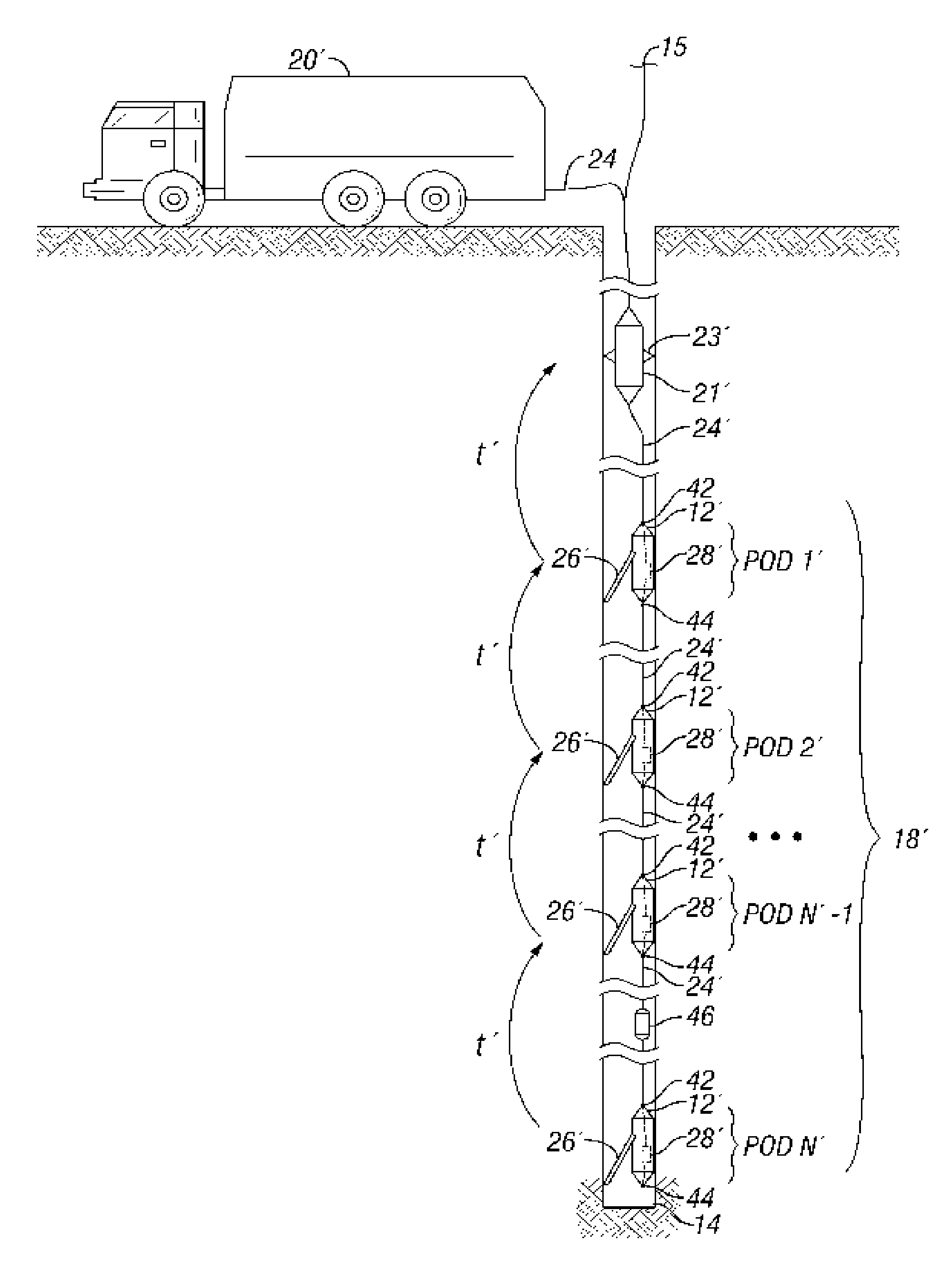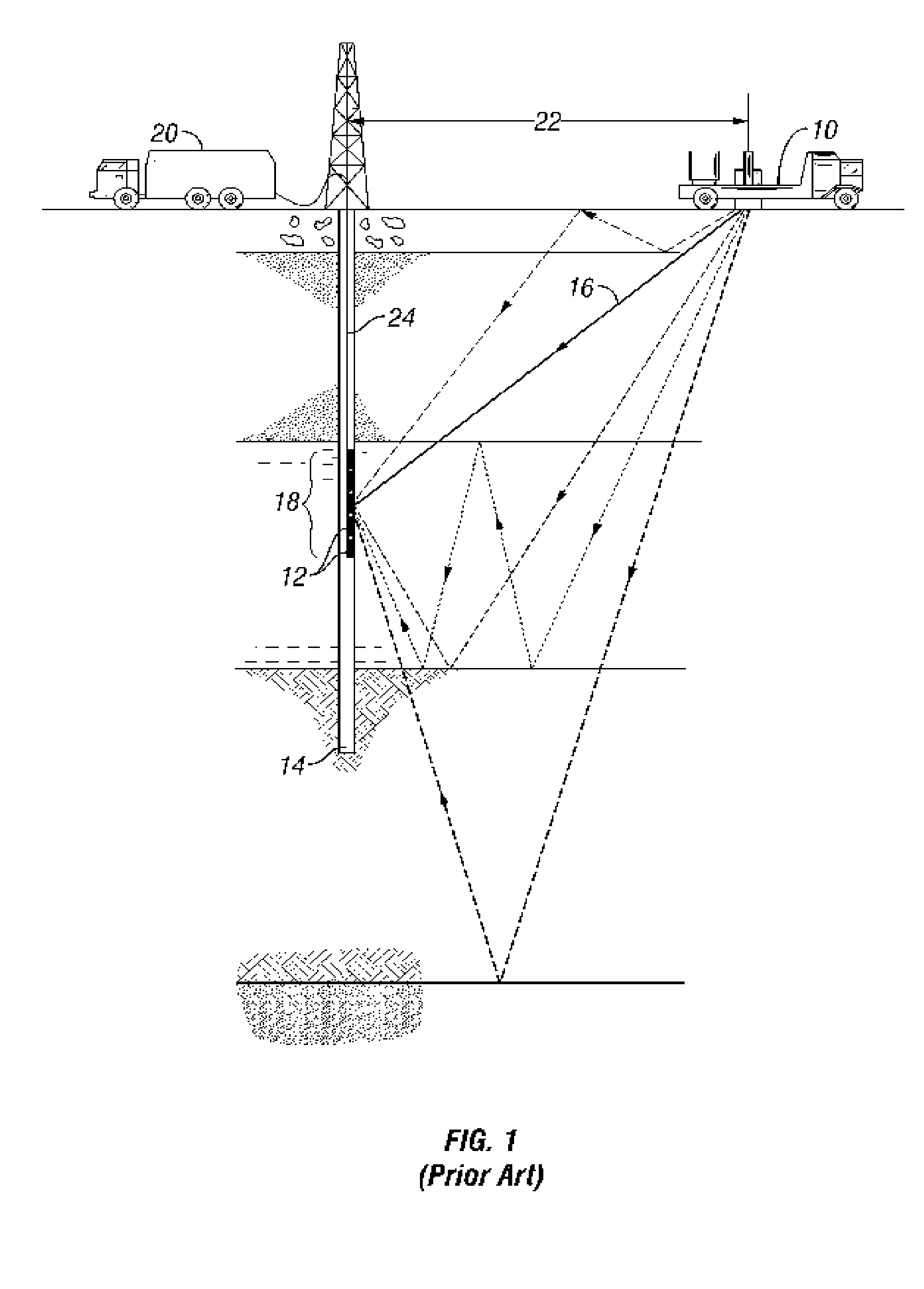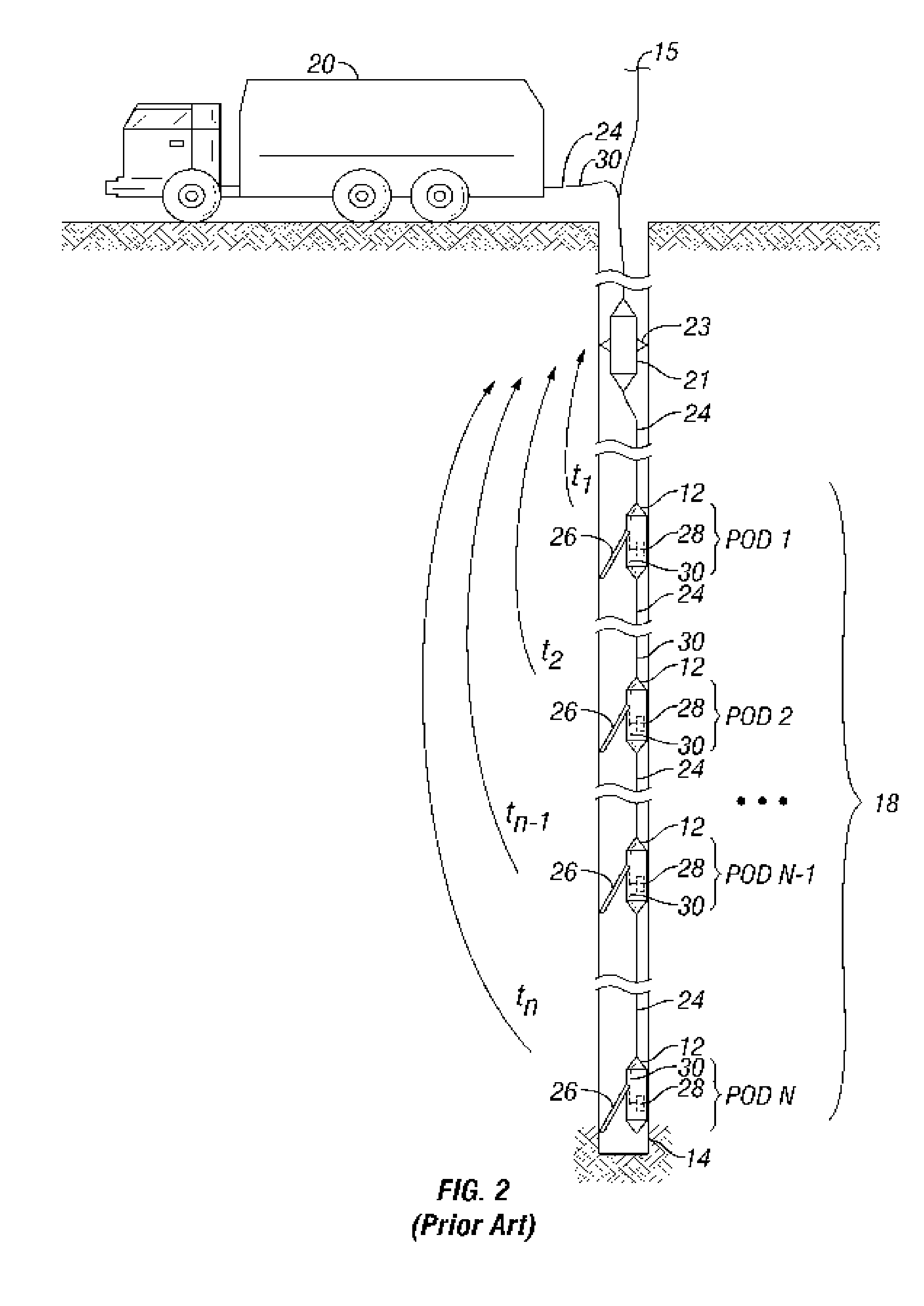Seismic Data Acquisition System and Method for Downhole Use
a seismic data and data acquisition technology, applied in the field of seismic systems, can solve the problems of inability to change the configuration, inability to detect the polarity and amplitude of a waveform in three dimensions, and often limited borehole seismic recording, so as to improve the data transfer rate and improve the accuracy of borehole seismic recording
- Summary
- Abstract
- Description
- Claims
- Application Information
AI Technical Summary
Benefits of technology
Problems solved by technology
Method used
Image
Examples
Embodiment Construction
[0041]FIG. 4 illustrates a borehole seismic recording system according to the invention. The system includes a surface-based main controller 20′ connected to a telemetry and control module 21′, which is in turn connected to one end of a string 18′ of multiple remote measurement stations, or pods, 12′ that are interconnected serially by cables 24′ and quick-disconnect connectors 42, 44. The telemetry and control module 21′ and the string 18′ are lowered into a borehole 14 and suspended by a winch 15. Because the pods are interconnected in the array 18′ using releasable connectors instead of e.g., overmolding, the pods 12′ and the cable segments 24′ are easily removed from the array for repair. In fact, the array can be field modified to suit particular requirements by adding or removing pods, shifting sensor depths (by substituting cable segments with differing lengths), or substituting pods with different sensor types. Each pod 12′ which is equipped with sensors, e.g., 3-C sensors, ...
PUM
 Login to View More
Login to View More Abstract
Description
Claims
Application Information
 Login to View More
Login to View More - R&D
- Intellectual Property
- Life Sciences
- Materials
- Tech Scout
- Unparalleled Data Quality
- Higher Quality Content
- 60% Fewer Hallucinations
Browse by: Latest US Patents, China's latest patents, Technical Efficacy Thesaurus, Application Domain, Technology Topic, Popular Technical Reports.
© 2025 PatSnap. All rights reserved.Legal|Privacy policy|Modern Slavery Act Transparency Statement|Sitemap|About US| Contact US: help@patsnap.com



